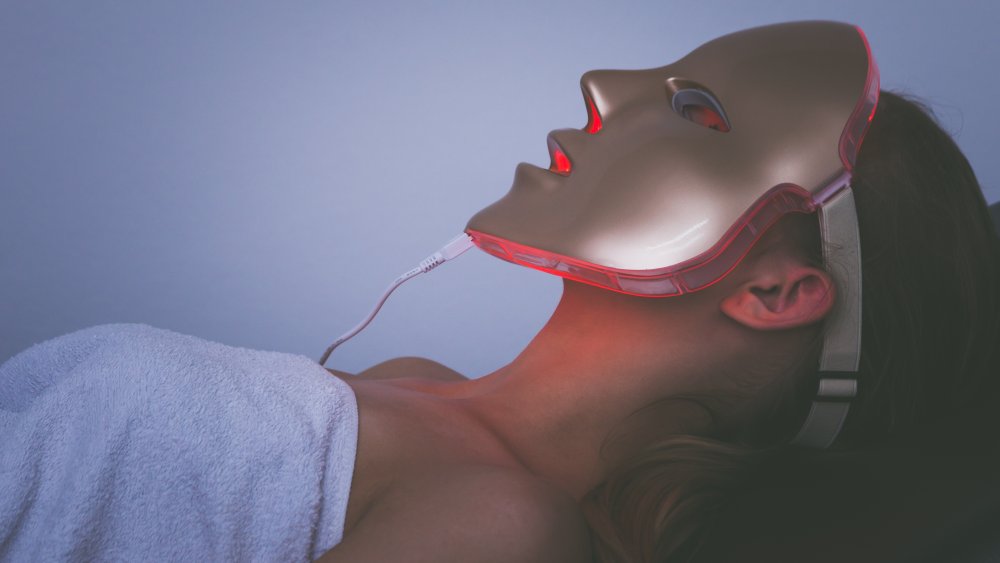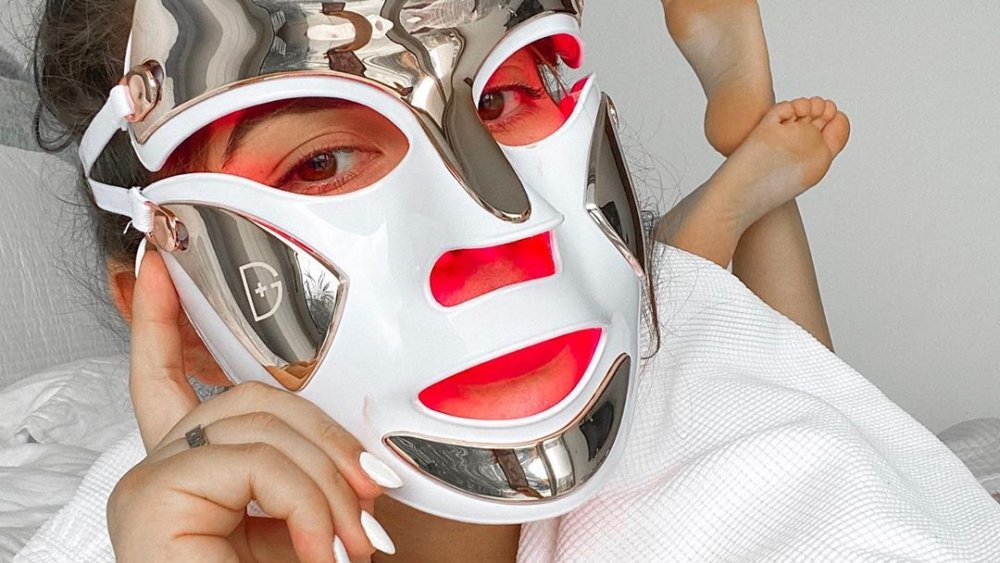Everything You Should Know About Light Therapy Masks
Few things are more exciting than discovering a treatment you were once having done in-office is now available to you at home. Recently, one of the most popular treatments seems to be light therapy masks. You may have seen these odd-looking contraptions drifting around Instagram and contrary to what you might think, they're not part of Halloween costumes. In fact, the only shocking part of these light therapy masks is how powerful they can be when it comes to improving the look of your skin, including treating fine lines, acne, and inflammation.
There's no one-size-fits-all approach for reaping the benefits masks like this can provide. They all range widely in price and the length of time you should be using them. A version like Dr. Dennis Gross' Skincare DRx SpectraLite FaceWare Pro LED Light Therapy Device ($435) only requires three minutes a day, whereas DMH Aesthetics' Light Shield ($190) recommends 10 to 20 minutes, depending on what color light you use.
Perhaps this much light exposure is making you question if LED light therapy masks are actually safe, which is a fair point, seeing that machines like tanning beds are quite dangerous. Luckily, according to Healthline, light therapy masks have proven to be safe and beneficial, part in thanks to their absence of UV rays, which are damaging to the skin.
But beyond their funny looks and playful colors, you're probably wondering what the lights can actually do for your skin, and the answer is, quite a lot.
How do light therapy masks work?
Unlike many other skincare treatments, you won't feel anything from using an LED mask, but that doesn't mean they aren't working. "Each mask employs a different spectrum of light wavelengths that penetrate skin to trigger changes within skin at the molecular level," Dr. Michele Farber, a board-certified dermatologist, explained in an article from Everyday Health.
The most popular colors of these lights are blue and red; the first is is known for its ability to wipe out the bacteria that causes acne, and the second calms skin and boosts circulation (via Vogue). The main difference between these lights and your average serum is that they can go a lot deeper and stop problems in their tracks.
Dr. Sheel Desai Solomon, another board-certified dermatologist who spoke with Everyday Health explains, "Unlike topical treatments that work to ease inflammation and bacteria on the surface of the skin, light treatment eliminates the acne-causing bacteria in the skin before it begins to feed on the oil glands, causing redness and inflammation." Hence why most masks come with a variety of colors.
So, while they definitely can be expensive and may take up a little bit more of your time, light therapy masks (on top of a good skincare routine) can certainly be a worthy investment.

